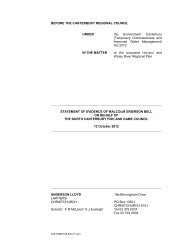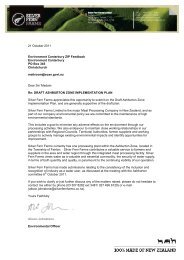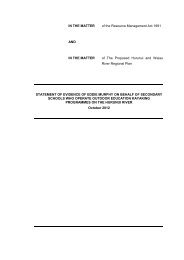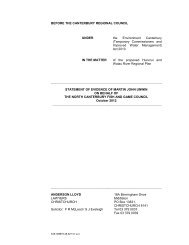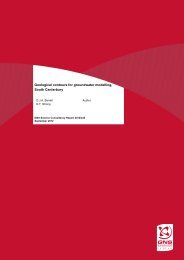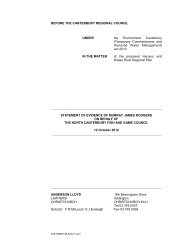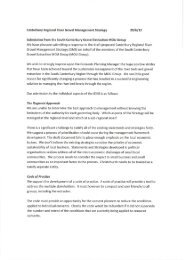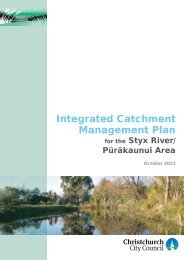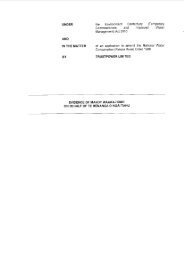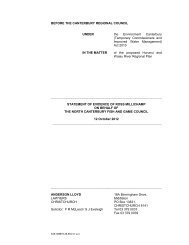Evidence of Robert Dawson - Environment Canterbury
Evidence of Robert Dawson - Environment Canterbury
Evidence of Robert Dawson - Environment Canterbury
Create successful ePaper yourself
Turn your PDF publications into a flip-book with our unique Google optimized e-Paper software.
3<br />
and he would work in those high country stations shearing with my uncles and other men,<br />
mainly from Tuahiwi.<br />
2.3 I went shearing with my grandfather and uncles from the age <strong>of</strong> 5 until I went to boarding<br />
school in the North Island when I was 12. They would go shearing from October to January.<br />
I would go up there during the school holidays or any other time my grandfather would ask<br />
me.<br />
2.4 My grandfather would come around home and say to me “Well boy do you want to come up<br />
to the shearing shed” I would say yes and then he would tell me to go get my swag. I<br />
would spend about 2 weeks a time up there, and would be going backwards and forwards<br />
during the shearing season. Looking back on it now I guess I used to miss quite a bit <strong>of</strong><br />
school.<br />
2.5 The first farm I would have gone to would have been the Glens <strong>of</strong> Tekoa station. I also<br />
recall going to other stations like Esk Head, Islands Hill and Lake Taylor. We would go<br />
through the Hurunui and work our way all the way down to the south bank <strong>of</strong> the Rakaia.<br />
2.6 My aunties worked on the Glens <strong>of</strong> Tekoa station. My Aunty June Karaitiana was a land girl<br />
there and my Aunty Mere Karaitiana used to also work there doing all the cooking. When<br />
my uncles went out shearing my aunties looked after me who would feed me up on cakes<br />
and scones. There was always something to do. They certainly taught us to work hard. I<br />
really missed going up there when I had to go to boarding school.<br />
2.7 During our time on the high country stations eels were a major part <strong>of</strong> our diet. We used a<br />
hinaki to catch eels. We had hinakis hidden underneath all the woolsheds. So when we<br />
arrived for the shearing season we knew where the hinaki were. Then when we left we<br />
would put the hinaki back underneath the woolshed for the following year.<br />
2.8 The hinaki were usually made out <strong>of</strong> chicken netting and no.8 wire. The hinaki would be<br />
placed in the water with mutton or a sheep head in it, and we would put a sack over the<br />
hinaki it to make it dark. We would leave the hinaki in the water over night and check it the<br />
next morning.<br />
2.9 Everytime it was full <strong>of</strong> eels. You couldn‟t pull the hinaki out by yourself, it always needed<br />
two people. In those days the eels were massive. I would say about 7 kilos in size. We<br />
would only take the large eels because I think this was what the old people preferred to eat.<br />
We only took enough eels to feed everyone, so for a gang <strong>of</strong> 10 we might take 5 big eels.<br />
2.10 The eels used to be dried, split, and then cut into big steaks, and put in a roasting dish to be<br />
roasted. I can remember old Joby Skipper who used to stuff them. Joe Karaitiana who lived




